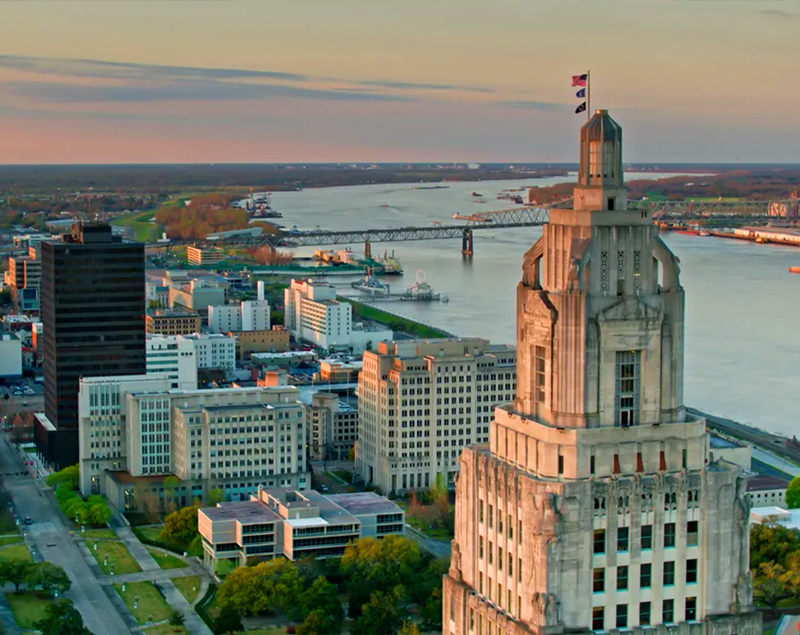What Are the Five Categories of Hurricanes?

Any state with a coastline can experience major storms, although hurricanes tend to occur closer to tropical regions. This type of tropical cyclone is characterized by high wind speeds and storm surges that may cause damage to watercraft, structures, and the landscape when they make landfall.
Hurricanes can lead to power outages, car accidents, flooding, and structural collapses. The worst storms can be responsible for the loss of life, as well. In 2005, four major hurricanes, including Hurricane Katrina, resulted in over 1,500 deaths. In 2017, two major storms (Harvey and Maria) struck the Gulf Coast region, causing nearly 150 deaths.
Hurricane Helene in 2024 was responsible for well over 200 fatalities, with at least one instance of employees at a plant being forced to remain at work, resulting in potential wrongful deaths.
These storms were all incredibly powerful, with high winds and storm surges leading to damage and death. How are hurricanes categorized, and why is it important to pay attention to weather predictions during such storms?
The Five Hurricane Categories
There are five different categories of hurricanes, ranging from mild to severe. These categories relate not only to the storm itself, in terms of wind speeds and storm surges, but also to the extent of damage they cause. What can you expect from each category?
1. Minimal: Category 1
Although a category 1 hurricane is considered to cause minimal harm, it still includes wind speeds of 74-95 mph and storm surges of 3-5 feet. It can damage foliage, piers, and small watercraft and also cause flooding in low-lying coastal areas, making some roads impassable.
2. Moderate: Category 2
Category 2 hurricanes feature wind speeds of 96-110 mph and storm surges of 6-8 feet. They can result in flooding of low-lying coastal areas up to 2-4 hours before the storm makes landfall. Trees may fall, and mobile homes could experience major damage. Permanent structures might experience damage to doors, windows, and roofs.
3. Extensive: Category 3
Wind speeds of 111-130 mph and storm surges of 9-12 feet are indicative of a category 3 hurricane. These storms can knock down trees and signage and leave lowland and even some inland coastal escape routes impassable as much as 3-5 hours before landfall.
Drivers caught out in the storm could not only experience car or truck accidents but also get stranded due to flooding.
Structures near shorelines are sure to flood, while buildings in the path of the storm are likely to suffer major damage to windows, doors, and roofing. Mobile homes could be destroyed, while larger structures are harmed by waves and floating debris.
4. Extreme: Category 4
A category 4 hurricane will cause extreme damage, resulting from wind speeds of 131-155 mph and storm surges of 13-18 feet.
Destruction of landscape, beach erosion, and damage to homes is considerable in a category 4 storm, with potential for total building failure. Structures near shore will experience flooding of at least lower levels, and flat terrain 10 feet or less above sea level could see flooding as much as six miles from the shore.
5. Catastrophic: Category 5
The strongest hurricanes reach category 5, a catastrophic level characterized by wind speeds greater than 155 mph and storm surges over 18 feet. Many structures will experience total failure of windows, doors, and roofing — if not complete destruction.
Buildings could be blown or swept away. Any structures within 500 yards of shoreline or less than 15 feet above sea level are likely to be destroyed.
Pay Attention To Weather Reports
When you understand storm categories, you can see why evacuations are necessary. It can be tempting to hunker down and remain on your property. However, if you’re in areas likely to experience flooding, damage, or destruction, or the storm is a category 3 or above, remember that your life and the lives of your loved ones are worth more than a building.
Contact Our Personal Injury Law Firm in Baton Rouge, LA
If you’ve been injured in an accident in Baton Rouge, Louisiana, and need legal help, contact our Baton Rouge Personal Injury lawyers at Palmintier Law Group to schedule a free consultation today.
Palmintier Law Group
618 Main St, Baton Rouge, LA 70801, United States
225-401-6962
